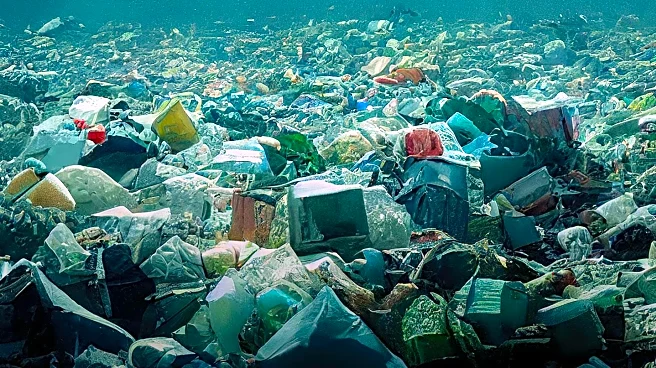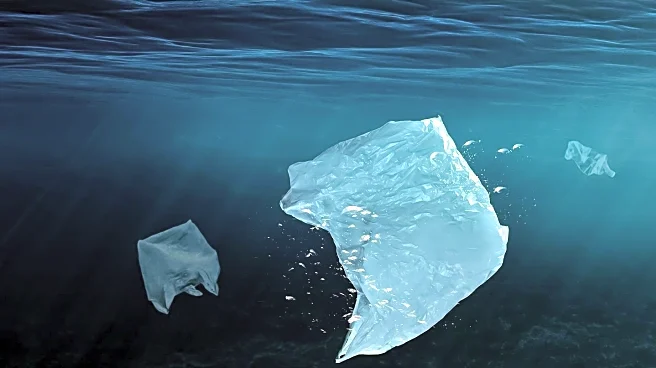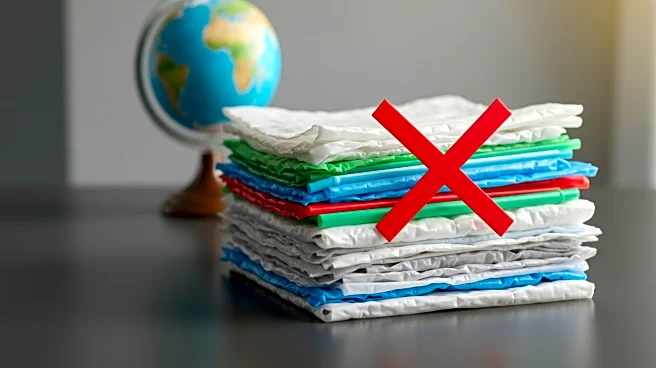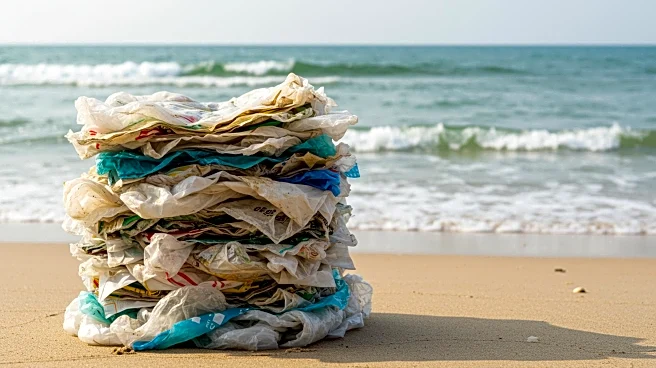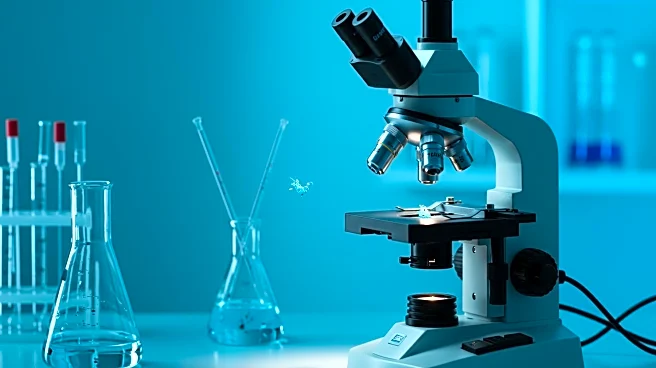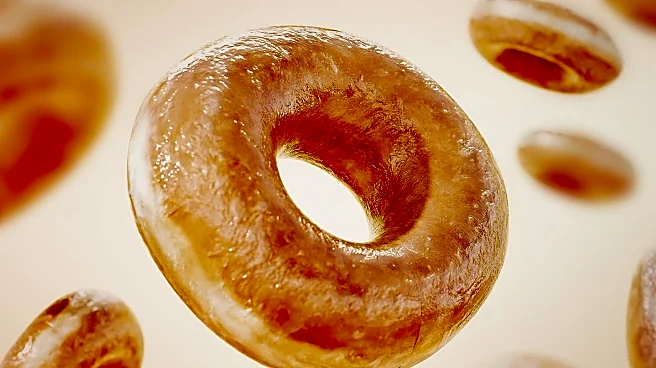What is the story about?
What's Happening?
Materials scientist Joshua Grolman has outlined several strategies to minimize exposure to microplastics, which are pervasive in everyday life. Microplastics, tiny particles that originate from larger plastic items, are found in air, food, and water, and are suspected to pose health risks such as reproductive, digestive, and respiratory issues. Grolman recommends choosing clothing made from natural fibers like cotton, wool, linen, and hemp, which are biodegradable and less likely to shed microplastics compared to synthetic materials. He also advises avoiding disposable plastic products, such as takeout containers and cutlery, and suggests using stainless steel utensils and water bottles instead. Additionally, Grolman encourages reducing car usage, as tire abrasion contributes to microplastic pollution, and promotes cycling as a healthier and more environmentally friendly alternative.
Why It's Important?
The widespread presence of microplastics in the environment and their potential health impacts make it crucial to find ways to reduce exposure. By adopting Grolman's recommendations, individuals can contribute to decreasing microplastic pollution and potentially mitigate health risks associated with these particles. The emphasis on natural fibers and reusable products also supports sustainability efforts, reducing reliance on single-use plastics. Furthermore, promoting cycling over driving not only reduces microplastic exposure but also benefits the environment by lowering carbon emissions. These lifestyle changes can lead to broader societal shifts towards more sustainable practices, impacting industries such as fashion, transportation, and waste management.
What's Next?
As awareness of microplastic pollution grows, there may be increased demand for products made from natural fibers and reusable materials. This could drive innovation in sustainable product design and manufacturing, as companies seek to meet consumer preferences for environmentally friendly options. Additionally, public policy initiatives might emerge to encourage reduced plastic usage and promote alternative transportation methods. Stakeholders, including environmental groups and health organizations, may advocate for further research into the health effects of microplastics and push for regulations to limit their presence in consumer products.
Beyond the Headlines
The movement towards reducing microplastic exposure highlights broader ethical and cultural shifts towards sustainability and environmental responsibility. As individuals become more conscious of their impact on the planet, there may be increased pressure on industries to adopt eco-friendly practices. This could lead to long-term changes in consumer behavior, with a preference for quality over quantity and a focus on products that align with sustainable values. Additionally, the push for reduced car usage and increased cycling may influence urban planning and infrastructure development, promoting more bike-friendly cities and communities.
AI Generated Content
Do you find this article useful?
